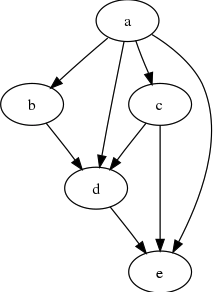One of my new found interests besides ML stuff is Data Engineering.
One interesting thing I hope to explore more is the way various ways organizations handle scheduling jobs.
Obviously cron is a pretty solid initial step, but it doesn’t scale well at all. One frustration with cron at scale is that it always runs at a specified time. If a job runs 1 minute longer than expected it will cause all subsequent dependent jobs to fail (since they are dependent on the task to complete before they run)
Unfortunately to fix such failures costs developer time and effort. Not to mention it could cause unwanted downstream issues in dev, stage and prod environments… OH NO!
So how do we manage these dependencies?
Well, to fix these issues we need to better understand the dependencies these jobs have with one another and clearly map them out.
Using DAGs ( Directed Acyclic Graphs) we can clearly map these dependencies.

Credit Wikipedia
Once we are finished, we can then elicit the help of a Workflow Scheduling Framework to run the tasks in order as part of a single workflow.
In addition to preventing failures due to long running tasks, these set of tasks will run faster since they can run as soon as the dependent task finishes instead of waiting until it’s scheduled time.
3 industry standard workflow management tools that can help us here are:
- Apache Airflow created by Airbnb
- Oozie (also apache)
- Luigi created by Spotify
This is by no means an exhausive list, there are no doubt many more.
But this should be enough for you to get started. If you happen to have any questions come up feel free to email me 😃
